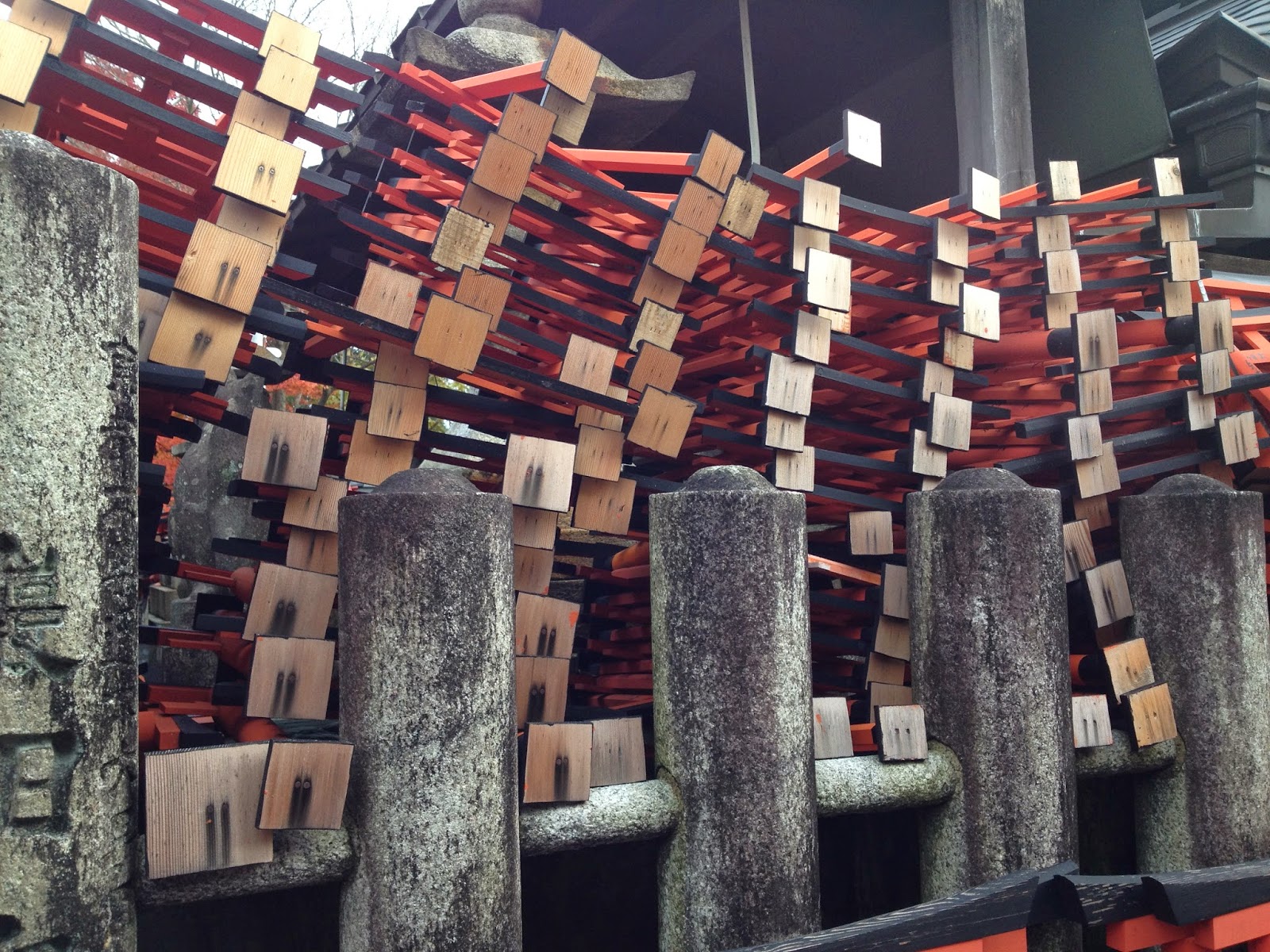Inari is the Shinto spirit of rice, merchants and prosperity, and Fushimi Inari is Inari's main shrine, though there are thousands of child shrines all over Japan. Inari's symbol is the fox, which in Japanese culture is seen as a wise animal to be revered (not, as in the UK, a shrieking harbringer of disease and persistent disturber of bins). Thus, the path to the shrine is kitted out with fox statues, some more disturbing than others.
I say "the path to the shrine" because it's actually at the top of a mountain, which takes at least a good hour or two to climb if you're not rushing. However, the path is carved into gentle steps all the way and is never demanding, so you never really think of it as a mountain hike so much as a really long staircase. At occasional points it flattens out, so you can stop for an ice cream or make a wish (for a price):
You can also write your wishes on these little foxhead boards, as well as drawing faces on them because religion is fun:
The further up you get, the quieter it gets, and vaguely more solemn in tone. At the top we saw some Shinto priests and their congregation engaged in some kind of ritual I'm far too ignorant to expound on, except to say that it involved chanting and chanting always sounds brilliant no matter what the situation. We stayed a respectful distance away and felt smugly superior to the Japanese guy who got yelled at for trying to take pictures.
But most notably:
The pathway is lined most of the way with thousands of squillions of these torii - vivid, striking gates which mark the boundary between the sacred and the profane. (The colour of these gates is called makka, translated as 'pure red'. I haven't had the heart to tell anyone here yet that it's actually orange. Funnily enough I had the exact same dilemma fifteen years ago when my grandparents insisted they had painted their house "peachy coral".) Fushimi Inari might be an important site for Shinto, but arguably it's the stunning sight of this endless path of gates which draws so many foreign tourists.
As I mentioned, Inari is the god of merchants, and every gate leading up to the shrine was donated by a business or...purveyor of business, I guess. Here you can see the dates of their donations painted on the gates:
The size of your gate even varies depending on how much you donated. At the top there's a whole tonne of tiny model gates piled up, little talismans donated by those who couldn't afford a gate big enough to walk through but were still looking for favour.
Capitalism has never looked so noble.
And thanks to the little souvenir we brought back with us, capitalism has never looked so adorable:












No comments:
Post a Comment